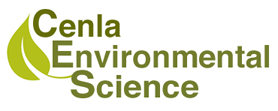Case Study 2: City of 6,000 Drinking Water Violation
In January of 2013, a parish seat of 6,000 received notice from the Louisiana Department of Health and Hospitals, Office of Public Health of a positive bacteriological result from the city’s routine samples.
Cenla Environmental Science immediately began a dialogue with LDHH OPH. Due to extreme flooding that occurred in mid-January, LDHH OPH advised that repeat samples from the city’s collection sites and city’s water supplier source wells be collected on Sunday, January 13 or Monday, January 14. The city’s water supplier collected their samples on January 13. The city collected their repeat samples on January 14. The city requested that Cenla Environmental Science work with LDHH OPH in an effort to avoid a possible violation of the Ground Water Rule.
Cenla Environmental Science contacted LDHH OPH representatives to inform them that the samples were collected on different dates due to the dangerous weather and flooding conditions. On January 18, 2013, local LDHH OPH personnel informed all there were no issues. However, on January 24, LDHH OPH reversed their position and stated that the water system would in fact receive a violation. A public notice violation, which in addition to a material expense, creates a perception to water system customers that the city hasn’t performed as required.
Cenla Environmental Science representatives travelled to Baton Rogue to meet with Assistant Secretary of LDHH, head of LDHH OPH, Chief Engineer and Deputy Chief Engineer to discuss the matter. Additionally, Cenla Environmental Science dialogued with EPA in Dallas, TX regarding the matter. CES argued that the samples were collected within 24 hours and the Ground Water Rule did not support LDHH OPH’s position.
Following the meeting in Baton Rouge, LDHH OPH, to its credit, issued a state-wide “Clarification” to its field personnel and engineers stating, “We will no longer issue a monitoring violation for this.”
CES’s client saved the expense and unnecessary labors of having to issue a public notice violation.

